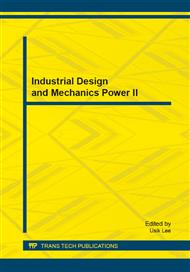p.186
p.190
p.194
p.198
p.202
p.207
p.213
p.217
p.222
3-D Numerical Simulation on Micro-Hole of the Common-Rail Pipe Abrasive Flow Machining
Abstract:
Common-rail pipe is an important component of fuel injection system, whose inner cavity is hidden and requires a high precision. So that the general mechanical processing is difficult to achieve, while abrasive flow machining just be able to solve this problem. In this article, the three-dimensional model of common-rail pipe is established and meshed by GAMBIT, next the mesh file is read into FLUENT, and then the Mixture model is used for numerical simulation. By analyzing the simulation results, we can get how will the pressure difference between inlet and outlet, the volume fraction of abrasive, and the processing order impact on the processing quality. Finally, a reasonable processing program is proposed for the common-rail pipe.
Info:
Periodical:
Pages:
202-206
Citation:
Online since:
October 2013
Authors:
Price:
Сopyright:
© 2013 Trans Tech Publications Ltd. All Rights Reserved
Share:
Citation:


